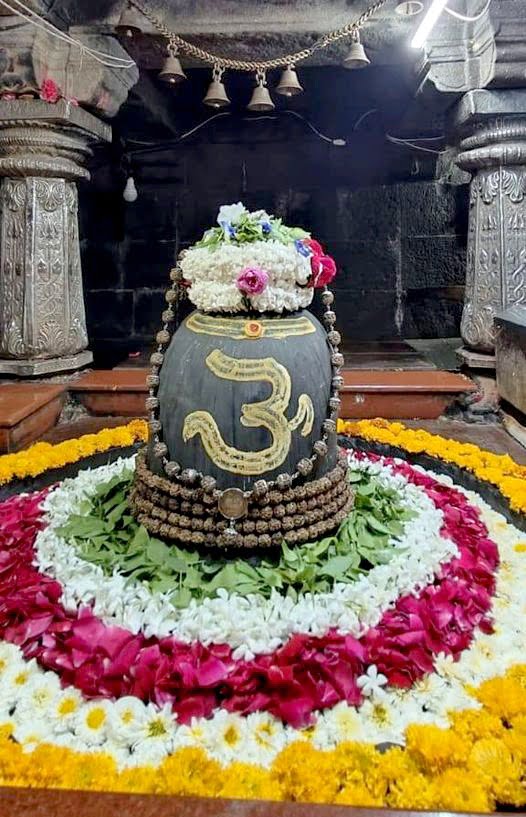Chengannur Mahadeva Temple
The Chengannur Mahadeva Temple, also called Bhagavathy Temple, is a prominent Hindu temple dedicated to Shiva and Bhadrakali, located in the town of Chengannur in the South Indian state of Kerala. The temple is one of the major Shiva temples in Kerala.
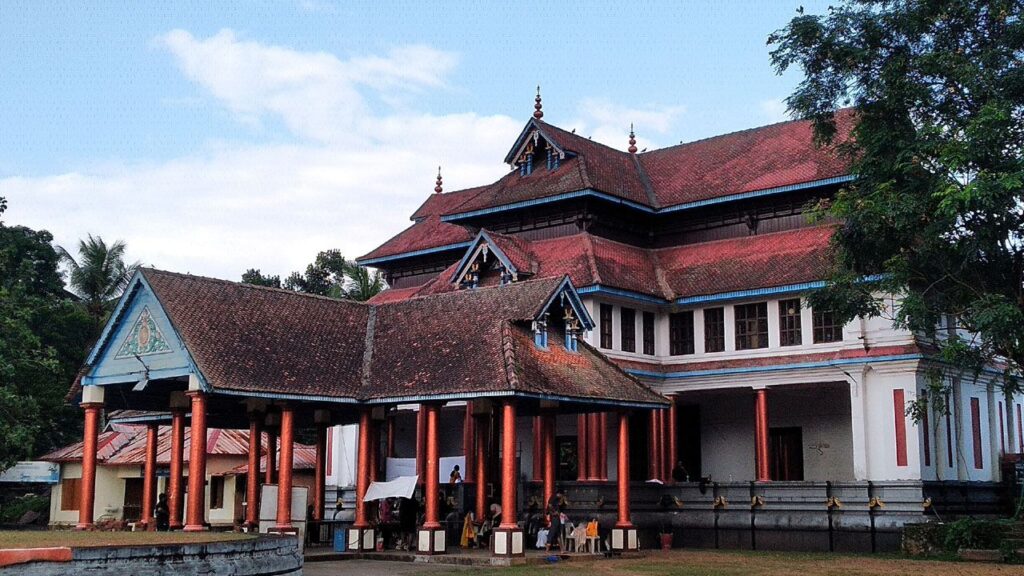
Contents
- 1 Chengannur Mahadeva Temple History:
- 2 Legend of Chengannur Mahadeva Temple:
- 3 Significance of Chengannur Mahadeva Temple:
- 4 Myths of Chengannur Mahadeva Temple:
- 5 Chengannur Mahadeva Temple Architecture:
- 6 Chengannur Mahadeva Temple Timing & Rituals:
- 6.0.1 Timings:
- 6.0.2 Festivals:
- 6.0.3 Nageshwar Jyotirlinga Dwaraka: 7th CE Temple with Divine Powers
- 6.0.4 Grishneshwar Temple: Wealth and Pleasure at Shiva’s Feet
- 6.0.5 Kedarnath Temple: One of Jyotirling & Char Dham
- 6.0.6 Trimbakeshwar Jyotirlinga Temple
- 6.0.7 Sacred Kashi Vishwanath Temple: 11th Jyotirling of Liberation
- 6.0.8 Aundha Nagnath Temple: 8th Jyothirling with Divine Serpents
- 7 Places to visit near Chengannur Mahadeva Temple:
- 8 FAQ:
- 8.0.1 1. What is Chengannur Mahadeva Temple?
- 8.0.2 2. Where is Chengannur Mahadeva Temple located?
- 8.0.3 3. What is the significance of Chengannur Mahadeva Temple?
- 8.0.4 4. What are the main festivals celebrated at the temple?
- 8.0.5 5. What are the temple’s opening and closing times?
- 8.0.6 6. Is there any dress code for visiting the temple?
- 8.0.7 7. Can non-Hindus visit the temple?
- 8.0.8 8. How can I reach Chengannur Mahadeva Temple?
- 8.0.9 9. Are there any accommodation facilities near the temple?
- 8.0.10 10. Is photography allowed inside the temple?
- 8.0.11 11. Are there any special poojas or rituals I can participate in?
- 8.0.12 12. Who manages the temple?
- 8.0.13 13. What is the best time to visit Chengannur Mahadeva Temple?
- 9 How to reach Chengannur Mahadeva Temple:
Chengannur Mahadeva Temple History:
Origins: Legends claim the temple is over 1,500 years old, possibly built by the revered architect Perunthachan.
Discovery and Deities: A popular story describes a servant witnessing blood oozing from a stone while sharpening a tool. This stone is said to be a Shiva lingam, leading to the temple’s establishment. The temple enshrines both Lord Shiva (Mahadeva) and Goddess Parvathy (Bhadrakali).
Unique Festival: Chengannur Mahadeva Temple is particularly known for the Thriputharattu festival, a four-day celebration associated with the menstruation of Goddess Parvathy. This is a unique ceremony not found in many other temples.
Renovations: The temple has undergone renovations over time. Historical records mention a major fire and subsequent restoration by the Vanghipuzha Thampuran in the 18th century.
Read More>> Tirumala Tirupati Venkateswara Swamy
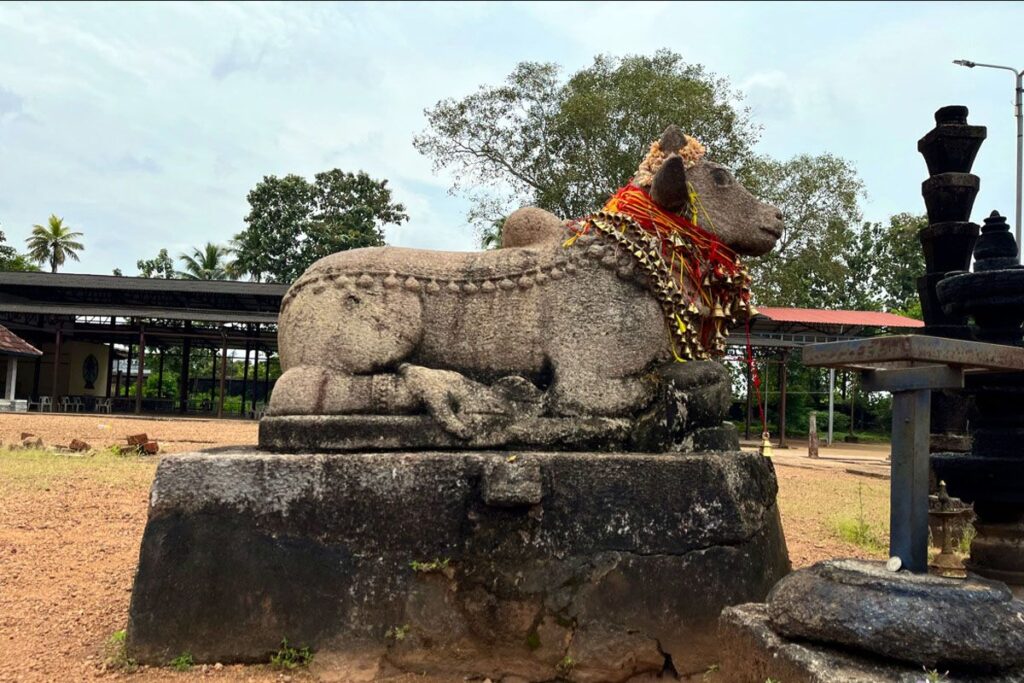
Legend of Chengannur Mahadeva Temple:
Parvati’s Arrival and Menstruation: One legend centers around Parvati, the consort of Lord Shiva. After marrying Shiva in the Himalayas, Parvati arrived at the temple location. As per the legend, she was experiencing her menstrual cycle, which traditionally necessitates a waiting period. For 28 days, Parvati waited before giving darshan (holy sight) to the sage Agastya. This legend ties into the unique festival of Thripputhu Aaraattu, where the menstruation of the associated deity, Goddess Parvathy (Bhagavathi), is celebrated.
Perunthachan, the Architect: Another legend credits the construction of the temple to the famed architect Perunthachan. Perunthachan is said to have built the temple over 1500 years ago. Some variations of the legend say the temple was commissioned by Parasurama, a powerful warrior-sage. Perunthachan also features in a story about predicting a fire that would destroy the temple’s original idol. He supposedly created a replacement idol that would be needed after the fire.
Read More>> Where are Shakti Peethas Located?
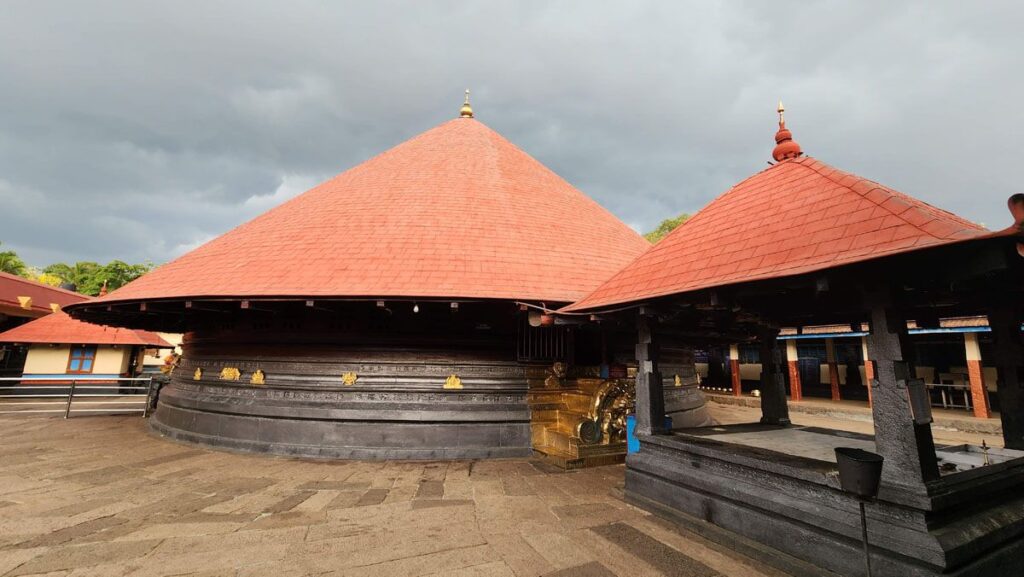
Significance of Chengannur Mahadeva Temple:
Unique Festival: It’s known for the Thripputharattu festival, a celebration associated with menstruation of the Goddess Parvathy. This observance is rare and highlights the temple’s approach to honoring the feminine aspects of divinity.
Historical Importance: Legends attribute the temple’s construction to the architect Perunthachan, placing its origins over 1500 years ago.
Architectural Beauty: Chengannur Mahadeva Temple is lauded for its exquisite woodwork, stunning pavilions (mandapams), and an attractive facade (mukhamandapam).
Dual Deities: Unlike many Shiva temples, Chengannur Mahadeva is dedicated to both Lord Shiva and Goddess Parvathy, reflecting their divine union.
Tantric Practices: The temple follows Tantric worship practices, a distinctive tradition within Hinduism.
Read More>> Hinglaj Mata Temple Balochistan
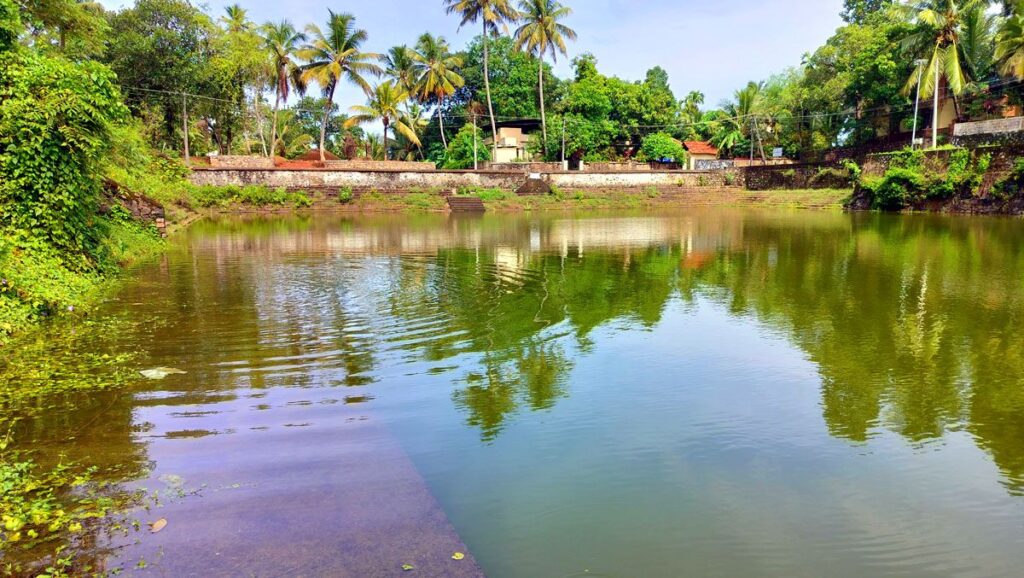
Myths of Chengannur Mahadeva Temple:
The Menstruating Goddess: Perhaps the most well-known myth is that the temple celebrates the menstruation of the goddess Bhadrakali, considered a form of Parvati. The temple is closed for three days during this time (Thripputhu festival), and a red mark on a white cloth is seen as a sign of the goddess’s divine power. This is unusual compared to many other temples in India where menstruating women are restricted from entering.
Parvati’s Visit and Sage Agastya: Another legend tells the story of Shiva and Parvati visiting Sage Agastya after their wedding in the Himalayas. Since Parvati was menstruating, she couldn’t meet the sage right away. The couple waited for 28 days (considered the duration of a menstrual period) before giving darshan (holy sight) to Agastya. Chengannur Mahadeva Temple is believed to have been built on the spot where this meeting occurred.
Chengannur Mahadeva Temple Architecture:
Main Structure:
- Sreekovil (Sanctum Sanctorum): The central shrine, housing the main deity, Lord Shiva. The structure is circular and made of stone and wood, typical of Kerala temple architecture.
- Mukhamandapam: The porch in front of the Sreekovil, used for rituals and offerings.
- Nalambalam: The rectangular structure surrounding the Sreekovil, providing a pathway for circumambulation (pradakshina).
Roof:
- Chengannur Mahadeva Temple has a multi-tiered, sloping roof made of copper plates, designed to withstand heavy monsoon rains.
Gopuram (Temple Tower):
- The entrance tower is less prominent compared to temples in other parts of India but is intricately carved with wooden sculptures and deities.
Koothambalam:
- A special hall within the temple complex used for cultural performances and traditional temple arts like Kathakali.
Other Features:
- Flagstaff (Dwajasthambam): A tall, gold-plated pole located near the entrance, used during festivals for flag hoisting.
- Balikkal Pura: The hall for sacrificial offerings and smaller shrines dedicated to other deities like Goddess Parvati.
Artistic Elements:
- The temple walls and ceilings are adorned with traditional murals and carvings depicting scenes from Hindu mythology.
- The entrance and the sanctum are often decorated with ornate woodwork and sculptures.
Temple Tank (Pushkarini):
- A sacred water tank within the temple complex used for rituals and purification.
Read More>> Subramanya Swamy Temple at Tiruttani
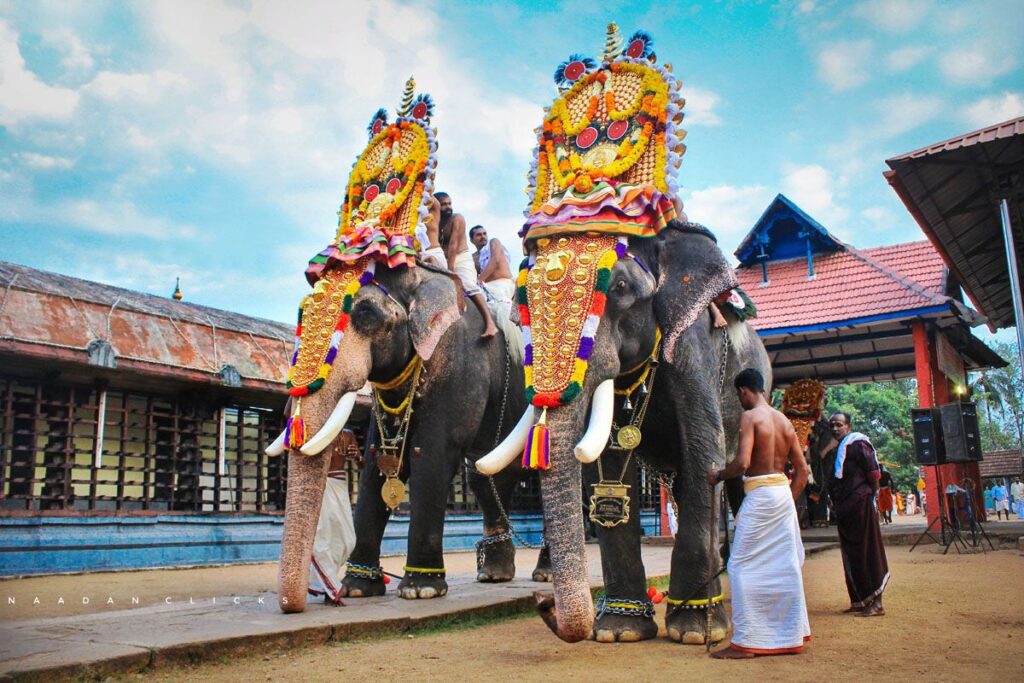
Chengannur Mahadeva Temple Timing & Rituals:
Timings:
The temple is generally open from 4:00 AM to 12:00 PM in the morning and 5:00 PM to 8:00 PM in the evening.
It’s important to note that these timings are subject to change during festivals and special occasions.
Daily Poojas (Rituals):
The temple follows a strict schedule of poojas (prayers) performed throughout the day. Here’s a glimpse into some of the important rituals:
Nirmalya Darshanam (4:00 AM): This is the first puja of the day, where devotees can have a glimpse of the deities after the removal of the previous day’s offerings.
Abhishekam (4:30 AM): This is a sacred bathing ceremony performed on the Shiva Lingam, often with milk, panchamritha (a mixture of five nectars), or other holy substances.
Ganapathy Homam (5:00 AM): A homa (fire sacrifice) dedicated to Lord Ganesha, seeking his blessings for an auspicious start to the day.
Usha Pooja (6:00 AM): The morning puja performed at sunrise.
Ethruthu Pooja (7:30 AM): This mid-morning puja is performed between 7:30 AM to 8:00 AM.
Pantheeradi Pooja (9:00 AM): This puja is performed two hours after sunrise, when a man’s shadow is twelve feet long.
Ucha Pooja (12:00 PM): This midday puja performed at noon.
Nadathurakkal (5:00 PM): The opening of the sanctum in the evening for darshan.
Deeparadhana (6:00 PM): The evening aarti (lamp offering) with oil lamps.
Athazha Pooja (7:30 PM): The closing puja performed before the temple is closed for the night.
Festivals:
The Chengannur Mahadeva Temple celebrates several festivals throughout the year. Some of the most prominent ones include:
Thripputharattu: This unique festival is a celebration of fertility and is associated with the menstruation cycle. The temple is closed for three days during this time, and special rituals are performed.
Shivaratri: A major festival celebrated across India, Shivaratri here is marked by elaborate poojas, devotional music, and large crowds.
Places to visit near Chengannur Mahadeva Temple:
- Aranmula Parthasarathy Temple: Famous for its Krishna temple and the Aranmula Boat Race.
- Kaviyoor Mahadeva Temple: Known for its ancient architecture and rock-cut cave temple.
- Thiruvalla Sreevallabha Temple: A famous Vishnu temple with beautiful sculptures and a unique offering of Kathakali performances.
- Parumala Church: A historic and important church for the Malankara Orthodox Syrian Church, dedicated to Saint Gregorios of Parumala.
- Pandavanpara: A scenic hill believed to be associated with the Pandavas from the Mahabharata.
- Pathanamthitta: This town offers several attractions, including the Sabarimala temple, one of the most famous pilgrimage centers in Kerala.
- Vazhoor: Known for its serene environment and the beautiful Vazhoor Kadavu.
- Charalkunnu: A picturesque hill station with a panoramic view of the surrounding countryside and the Pampa River.
- Mannadi: Known for the Mannadi Temple and the historical significance related to Velu Thampi Dalawa.
- Chengannur Mahadeva Temple itself: Don’t miss exploring the temple’s unique rituals and festivals, especially the Thriputharattu.
Read More>> Raghavendra Swamy Temple Mantralayam
FAQ:
1. What is Chengannur Mahadeva Temple?
Chengannur Mahadeva Temple is a historic Hindu temple located in Chengannur, Kerala, India. It is dedicated to Lord Shiva and Goddess Parvati.
2. Where is Chengannur Mahadeva Temple located?
The temple is situated in Chengannur, a town in the Alappuzha district of Kerala, India.
3. What is the significance of Chengannur Mahadeva Temple?
The temple is renowned for its unique ritual associated with the menstruation of Goddess Parvati, known as “Thriputharattu”. It attracts devotees from all over due to its cultural and spiritual importance.
4. What are the main festivals celebrated at the temple?
Major festivals include Thiruvathira, Thriputharattu, Maha Shivaratri, and Vishu. The annual temple festival, which lasts for 28 days, is another highlight.
5. What are the temple’s opening and closing times?
The temple typically opens at 3:30 AM and closes at 11:30 AM in the morning. In the evening, it reopens at 5:00 PM and closes at 8:00 PM. These times may vary during festivals and special occasions.
6. Is there any dress code for visiting the temple?
Yes, traditional attire is preferred. Men are expected to wear dhotis, and women should wear sarees, salwar kameez, or other traditional attire.
7. Can non-Hindus visit the temple?
Non-Hindus are generally not allowed inside the sanctum sanctorum but can visit the temple premises.
8. How can I reach Chengannur Mahadeva Temple?
The temple is well-connected by road and rail. The nearest railway station is Chengannur Railway Station, about 1 km away. The nearest airport is Cochin International Airport, approximately 110 km from Chengannur.
9. Are there any accommodation facilities near the temple?
Yes, there are several hotels, lodges, and guesthouses available in Chengannur for visitors.
10. Is photography allowed inside the temple?
Photography is generally not allowed inside the temple premises to maintain the sanctity of the place.
11. Are there any special poojas or rituals I can participate in?
Yes, the temple offers various special poojas and rituals. It is advisable to check with the temple authorities for the schedule and details.
12. Who manages the temple?
The temple is managed by the Travancore Devaswom Board.
13. What is the best time to visit Chengannur Mahadeva Temple?
The best time to visit is during the major festivals or between November and February when the weather is pleasant.
How to reach Chengannur Mahadeva Temple:
By Air:
- Nearest Airport: Cochin International Airport (COK), around 120 km away.
- From the airport, you can take a taxi or a bus to Chengannur.
By Train:
- Nearest Railway Station: Chengannur Railway Station, about 1 km from the temple.
- You can take an auto-rickshaw or walk from the station to the temple.
By Road:
- Buses: Regular buses operate from major cities in Kerala to Chengannur.
- By Car: Chengannur is well-connected by road. You can drive or hire a taxi.












